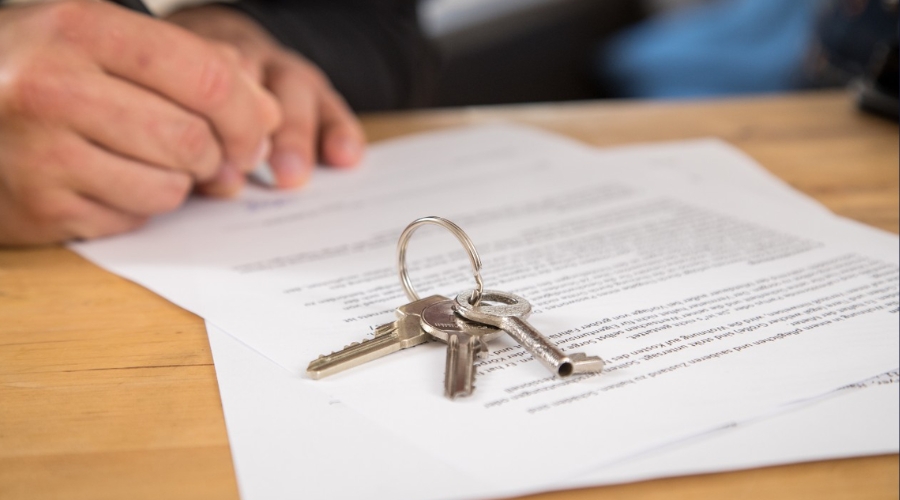Navigating the eviction process in New Mexico can be overwhelming for both landlords and tenants. From serving the correct notice to appearing in court, every step must follow strict legal procedures. Whether you're dealing with unpaid rent or lease violations, understanding the full eviction timeline and avoiding costly mistakes is essential.
LeaseRunners’ guide walks you through what to expect and how to stay compliant under New Mexico law.
New Mexico Eviction Law Changes in 2025: What’s New?
In 2025, New Mexico updated its rental laws, including key changes that affect New Mexico landlord rights and tenant protections. These new eviction rules aim to boost transparency, safeguard tenant privacy, and create a fairer rental process statewide.

New screening fee cap & disclosure rules (SB 267)
New laws in 2025 change how landlords in New Mexico handle evictions. These updates aim to improve fairness, protect tenant privacy, and limit surprise fees. Here's what landlords need to know:
1. Screening Fees Are Now Capped
- Screening fees are now limited to $50 per applicant.
- Landlords can’t charge more than one fee in 90 days, even if the tenant applies for multiple units.
- Fees can only be collected when:
- A rental unit is currently available.
- The applicant gives written consent for screening.
- The landlord issues a receipt.
- If no screening occurs or the unit is already leased, the fee must be refunded.
➡️ For compliant tenant screening, visit our Tenant Background Screening Service.
2. Full Disclosure Is Now Required
Landlords must clearly disclose all rental costs upfront in ads and listings. This includes:
- Base rent.
- All additional fees (e.g., utilities, pet fees, parking).
- An itemized breakdown to avoid confusion.
Charging undisclosed or unauthorized fees is now considered an unfair or deceptive trade practice. This may expose landlords to legal action.
3. New Cap on Late Fees
- Late fees are now limited to 5% of the monthly rent.
- Landlords cannot base late fees on deposits, utilities, or other charges.
- This change affects both new and existing leases.
4. Eviction Process Updates
SB 267 also updates eviction notice rules. While exact notice periods aren't listed in the bill summary, the reduced fee limits and required disclosures will affect how and when a landlord can begin the eviction process.
Landlords must ensure compliance with all updated regulations before serving a notice to quit or initiating eviction. Failing to follow the new rules — especially regarding fees or advertising transparency — may delay or invalidate eviction proceedings.
These new rules are designed to protect tenants from surprise charges and improve fairness during the rental application and eviction process. But they also place more responsibility on landlords to stay compliant and avoid legal risk.
Legal Reasons to Evict a Tenant in New Mexico
New Mexico law outlines specific, legally recognized situations where a landlord can remove a tenant from a rental property. Below are the primary grounds that can legally trigger the eviction process in New Mexico, each with its own required notice and procedures.
Nonpayment of Rent
One of the lawful grounds to initiate this process is when a tenant misses a rent payment. State law treats rent as overdue immediately after the due date, though rental contracts might include a grace period.
In this case, landlords are required to serve a 3-Day Notice to Pay, giving the renter three calendar days to cover the amount due.
Failure to settle within this timeframe permits the landlord to move forward with formal eviction proceedings. This rule helps protect landlords while still offering tenants a brief window to resolve missed payments.
Lease Violations
Breaching terms outlined in a signed lease can also lead to eviction. If a tenant disregards agreed-upon conditions—such as keeping unauthorized pets, causing damage, or engaging in prohibited behavior—the landlord must issue a 7-Day Notice to Comply.
This notice gives the tenant a full week to correct the issue. However, if the same lease infraction recurs within a six-month period, no second notice is necessary, and the eviction process can proceed without additional warning.
Illegal Activity or Serious Lease Breach
Engaging in unlawful conduct on the premises is treated as a significant violation under New Mexico law.
In such cases, the landlord may serve a 3-Day Notice to Quit, demanding the tenant vacate the property. Activities that justify immediate action include drug offenses, violent acts, and other criminal behavior.
These are considered substantial breaches that justify bypassing the usual compliance window. The eviction process in New Mexico allows for expedited legal action in these circumstances.
Lease Expiration or No-Fault Termination
Once a lease term ends, tenants are expected to vacate unless a renewal is agreed upon. Landlords are allowed to initiate this eviction process if a tenant stays beyond the lease period without signing a new contract.
The required notice period varies: month-to-month tenants typically receive a 30-day Notice to Quit, while weekly arrangements may only require 7 days’ notice. The law ensures both parties are protected in transitions between lease terms.
Squatters in New Mexico
If someone occupies a rental unit without a legal agreement, often referred to as a squatter, the property owner can begin the eviction process in New Mexico.
Unlike formal tenants, squatters in New Mexico have no lease protections and can be removed through the court system, provided the owner gives proper legal notice. This ensures property rights are upheld while following the appropriate legal route for reclaiming possession.

How to Serve a Legal Eviction Notice in New Mexico
Serving a legal notice is the first and most critical step in the eviction process. To do it properly, landlords must understand the type of notice required, what it must contain, and how it should be delivered.
Types of Eviction Notices Landlords Can Use
In the eviction process in New Mexico, landlords must choose the correct type of notice depending on the lease violation or reason for termination:
- 3-Day Notice to Pay Rent or Quit: Used when tenants fail to pay rent. It gives them three days to pay or vacate the property.
- 7-Day Notice to Cure or Quit: Applied when the tenant violates lease terms (e.g., unauthorized pets or damage). They must correct the issue within seven days or face legal action.
- 7-Day Unconditional Quit Notice: For repeated violations within a six-month period. No opportunity to cure is required.
- 30-Day Notice to Terminate a Month-to-Month Tenancy: Used when ending a periodic lease for reasons not related to tenant fault.
Required Info to Include in a New Mexico Eviction Notice
A valid eviction notice in New Mexico must include:
- Full name of the tenant(s)
- Property address
- The specific reason for the eviction
- The number of days the tenant has to comply or vacate
- Date the notice is issued
- A clear demand (e.g., pay rent or move out)
- Signature of the landlord or property manager
Methods to Serve Notice
To properly serve an eviction notice in New Mexico, landlords can choose one of the legally accepted delivery methods:
- Personal delivery to the tenant.
- Leaving the notice with someone over 15 years old at the residence.
- Posting the notice in a visible area on the premises and mailing a copy to the tenant's last known address via certified mail.
Improper service can result in a case dismissal or delay, adding weeks to the eviction process in New Mexico.
Common Mistakes to Avoid When Serving Notices
Landlords often make critical errors that jeopardize this eviction process, including:
- Using the wrong type of notice for the situation
- Failing to include key legal information (dates, reasons, demands)
- Not allowing the full notice period to elapse before filing in court
- Serving the notice improperly (e.g., via text or unverified email)
- Skipping documentation or proof of service
To avoid costly setbacks, landlords should carefully follow state laws and consider consulting legal counsel before initiating eviction proceedings.
Run a fast and reliable eviction check with LeaseRunner now!
Step-by-Step Eviction Process in New Mexico (Unlawful Detainer Case)
Navigating the eviction process in New Mexico requires strict adherence to legal procedures at every stage. Whether you're dealing with unpaid rent, lease violations, or simply need to regain possession of your property, understanding the step-by-step framework is essential.
Missing even one requirement could delay your case or result in dismissal. Below is a clear breakdown of each step landlords must follow to lawfully remove a tenant from their rental unit in New Mexico.
Step 1 – Serve the Right Eviction Notice
Landlords in New Mexico must give tenants a written notice before filing for eviction. The type of notice depends on the reason for ending the tenancy. Below are the most common notice types under NMSA § 47-8-33:
- 3-Day Notice to Pay or Quit – Used when the tenant has not paid rent. The tenant must pay within 3 days or move out.
- 7-Day Notice to Cure or Quit – Given for lease violations like having unauthorized pets or noise complaints. The tenant has 7 days to fix the issue or leave.
- 7-Day Unconditional Notice to Quit – Used after a second major lease violation within 6 months. No chance to fix the issue.
- 3-Day Unconditional Notice to Quit – For serious violations like criminal acts or damage over $1,000. No warning or cure period.
- 30-Day Notice to Terminate Tenancy – For ending a month-to-month rental without fault. Either party can give this notice.
Furthermore, landlords must properly deliver the notice to the tenant. Accepted methods include:
- Handing it directly to the tenant,
- Leaving it at the rental if the tenant is absent, or
- Sending it by certified mail.
These steps apply only to the initial notice, not court documents. If the tenant doesn’t respond, the landlord can then move forward with a court filing.

Step 2 – File a Petition for Restitution with the Court
If the tenant does not comply with the notice terms, the next step in the eviction process in New Mexico is filing a Petition for Restitution. This legal document formally initiates the eviction lawsuit.
The filing should occur in the Magistrate or Metropolitan Court located in the same county as the rental property. Landlords must include evidence supporting their claim, such as the lease agreement, records of unpaid rent, or documentation of lease violations.
Step 3 – Serve the Summons and Complaint to the Tenant
Once the court accepts the petition, the landlord must ensure the tenant is legally served with a Summons and Complaint. New Mexico law requires these documents to be delivered 7–10 days before the hearing.
Service may be done in person, by mail with a signed receipt, or left with someone aged 15 or older at the rental unit.
If these methods fail, alternative delivery options include posting the notice at the rental property and mailing a copy to the tenant’s last known address. Accurate service is crucial to proceed without delays.
Step 4 – Wait for the Tenant’s Response or File for Default
Tenants in New Mexico are not legally obligated to submit a written response prior to the hearing.
However, if they fail to appear on the scheduled date, the judge may issue a default judgment in favor of the landlord. This date is usually scheduled quickly — often within 7 to 10 days after filing or serving the notice.
At this stage, landlords should be prepared to move forward with a default request if the tenant is absent. Having complete documentation, including notices and lease agreements, helps strengthen the landlord’s case.
Step 5 – Attend the Eviction Hearing
During the hearing, both parties may present evidence such as payment history, photos of lease violations, or witness statements.
The judge will determine whether the eviction is justified based on the facts presented. If the court rules in favor of the landlord, a judgment for possession is granted.
Tenants generally have 10 days (Magistrate/Metro Court) or 30 days (District Court) to file an appeal after judgment. After filing, they must pay the owed rent or escrow it within 5 days (NMSA § 47-8-47) to stay the eviction.
This hearing is a pivotal moment in the eviction process in New Mexico, so landlords must be fully prepared.
Step 6 – Obtain a Writ of Restitution
If no appeal is filed or if the tenant fails to meet appeal requirements, the landlord can request a Writ of Restitution. This legal document authorizes law enforcement to remove the tenant from the rental property.
Although the court issues a judgment in favor of the landlord, the judge usually gives the tenant 3 to 7 days to voluntarily move out.
If the tenant remains after that period, only then can the landlord formally request the Writ of Restitution. It is not issued automatically and must be actively requested by the landlord to continue with the eviction process.
Step 7 – Sheriff Lockout and Repossession of the Rental Property
The final step involves the sheriff or an authorized officer carrying out the physical eviction. This only happens after the court issues a Writ of Possession, and the sheriff will only start the procedure if the tenant fails to move out within the court-ordered grace period, usually around 5 to 7 days after the judgment.
Any belongings left behind by the tenant must be stored for at least three days before disposal or sale, per New Mexico law. The landlord then regains legal possession of the unit, completing the eviction procedure in full compliance with state regulations.
How Long Does the Eviction Process Take in New Mexico? Typical Timeline
The eviction process in New Mexico typically spans from two to seven weeks, depending on the specific circumstances of the case and how swiftly each phase moves forward.
Below is a breakdown of each step along with its estimated duration to help both landlords and tenants better anticipate what to expect.
How Much Does It Cost to Evict a Tenant in New Mexico?
Evicting a tenant in New Mexico involves multiple steps, and each step may come with its own cost. While the court filing fee is the most recognized expense, it’s far from the only one.
Here's a breakdown of the estimated costs landlords may face during the 7-step eviction process in New Mexico:
- Issuing a Notice to Quit: This is the first formal step in the eviction process. While preparing and delivering the notice yourself may not cost anything, using a professional process server or certified mail can range from $10–$50.
- Filing an Eviction Lawsuit: To move the case to court, landlords must file a Petition for Restitution. In Bernalillo County, the filing fee is $132. Other counties may charge between $100–$150, so it’s important to check with the local court.
- Serving the Tenant with Court Documents Landlords are responsible for notifying the tenant after filing the notice. This is typically done via: Certified mail ($6–$15), or Process server ($40–$100), depending on the method and urgency.
- Attending the Court Hearing There’s no direct fee for the hearing itself, but landlords may choose to hire an attorney. Attorney fees vary widely, often starting at $200–$500, or more if the case is contested or complex.
- Obtaining a Writ of Restitution If the court rules in the landlord’s favor, a writ is issued allowing for removal of the tenant. There’s usually a writ issuance fee of $25–$50.
- Enforcement by the Sheriff. To carry out the eviction, the sheriff may charge $75–$150, depending on the county and logistics involved.
- Property Cleanout or Repairs (if needed) After regaining possession, some landlords face clean-up, trash removal, or repairs. Cleanout/repair costs can vary, but budgeting $100–$500 is common, depending on property condition.
In total, the estimated cost to evict a tenant in New Mexico ranges from $516 to $1,500, not including potential additional attorney fees for complex cases or extensive cleanout/repair costs.
What Documents Landlords Need to Win an Eviction in New Mexico
To successfully navigate the eviction process in New Mexico, landlords must come to court prepared. The following documents are essential to support your case and comply with state legal requirements:
- Lease agreements and rental records
- Proof of rent nonpayment or lease violation
- Photos, notices, communication logs
- Property condition documentation (move-in/out checklists)
1. Lease Agreements and Rental Records
Landlords must present a copy of the signed lease or rental agreement to prove the legal relationship between themselves and the tenant.
In addition, rental records such as rent receipts, rent ledgers, and bank statements serve as important evidence to show whether the tenant has fulfilled their payment obligations during the tenancy.
2. Proof of Rent Nonpayment or Lease Violation
To support an eviction for nonpayment of rent or a breach of lease terms, landlords must provide clear proof.
This includes payment history, rent due notices, and any documentation of lease violations, such as unauthorized occupants, illegal activity, or damage to the property—when applicable under the lease.
3. Photos, Notices, Communication Logs
Photographic or video evidence can help demonstrate the condition of the property or the nature of the violation.
Landlords should also keep copies of official notices served to the tenant (e.g., notice to pay or notice to comply), along with any written communication between landlord and tenant, including emails or text logs that relate to the issue.
Property Condition Documentation (Move-In/Out Checklists)
Although not always explicitly required, move-in and move-out documentation can be useful, especially in cases involving property damage or disputes about the unit's condition.
Keeping inspection reports, signed checklists, or time-stamped photos can help demonstrate whether the tenant caused any damage beyond normal wear and tear.
Top Mistakes Landlords Make During Evictions in New Mexico
Even with the right intentions, landlords in New Mexico can unintentionally make legal missteps during the eviction process in New Mexico. Below are some of the most common mistakes to avoid.

1. Using the Wrong Notice Form
New Mexico law requires landlords to issue the appropriate type of eviction notice based on the reason for termination.
For example, a 3-Day Notice to Quit is required for nonpayment of rent, while a 7-Day Notice to Cure or Quit must be used for lease violations. Issuing the wrong notice type—or omitting essential legal language—can result in the court dismissing the case.
2. Failing to Follow Required Notice Periods
Each notice under New Mexico law comes with a mandatory waiting period. For instance, after serving a 3-Day Notice for unpaid rent, landlords must wait three full days before filing in court. Filing too early—even by one day—may render the case invalid. Timing must comply precisely with statutory requirements.
3. Attempting a “Self-Help” Eviction
New Mexico strictly prohibits landlords from engaging in self-help actions such as changing locks, shutting off utilities, or removing a tenant’s belongings without a court order. These actions are illegal and can result in the landlord being liable for damages, attorney’s fees, and penalties.
4. Not Keeping Proper Documentation
Eviction proceedings require clear evidence. Failing to document rent delinquencies, lease violations, or communication with the tenant can weaken a landlord’s case in court.
Accurate records—such as payment histories, written notices, and dated correspondence—are critical in substantiating claims during the eviction process.
Final Thoughts
Understanding the eviction process in New Mexico is key to protecting landlord rights and tenant rights, whether you’re a landlord seeking legal compliance or a tenant facing removal. By following the correct steps and avoiding common mistakes, you can navigate the process smoothly and lawfully.
For more guidance or legal aid resources tailored to New Mexico’s unique rental laws, always consult trusted sources or legal professionals to ensure you’re on the right path.
Protect your rental rights and comply with state laws. Download our lease agreement templates for New Mexico and all 50 states!
FAQs
1. Can landlords evict tenants without going to court in New Mexico?
No. Under New Mexico law, landlords cannot evict tenants without a court order. Any attempt to remove a tenant without judicial approval—such as locking them out, shutting off utilities, or removing belongings—is considered a “self-help eviction” and is illegal.
Landlords must go through the full court procedure, obtain a judgment for possession, and request a writ of restitution to have law enforcement carry out the eviction if the tenant does not leave voluntarily.
2. What happens if a tenant refuses to leave after the court rules in favor of the landlord?
If a tenant does not vacate the rental unit after the court issues a judgment for possession, the landlord must request a Writ of Restitution from the court. This writ authorizes the sheriff to physically remove the tenant from the premises.
The writ can be issued within a few hours to a few days after the judgment. The tenant is typically given 3–7 days to move out after the writ is served. If they still refuse, the sheriff will carry out the eviction.
3. Do landlords need a reason to evict tenants in New Mexico?
It depends on the type of tenancy. For fixed-term leases, landlords generally need a lease violation or legal reason (e.g., nonpayment of rent) to evict before the term ends.
For month-to-month tenants, landlords can terminate the tenancy without giving a reason, but they must provide a 30-Day Written Notice. However, even in no-cause evictions, landlords cannot discriminate or retaliate against tenants for exercising legal rights, such as requesting repairs.



